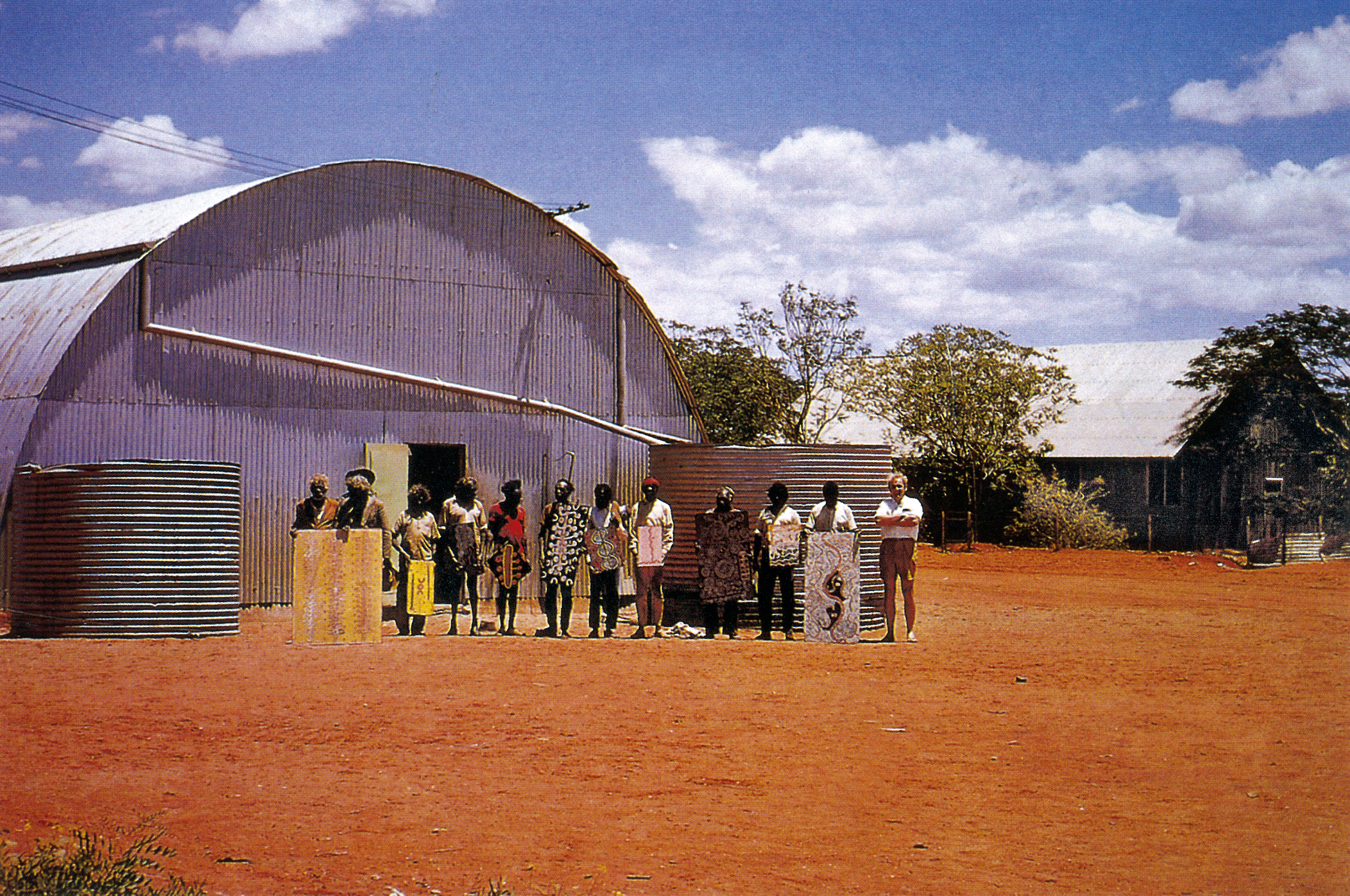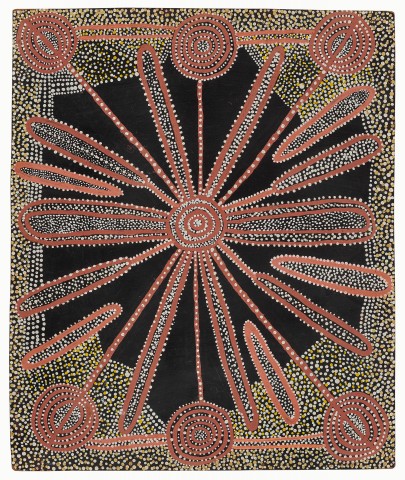UNTITLED (MEN’S CEREMONY), 1972
CHARLIE WARTUMA (TARAWA) TJUNGURRAYI
synthetic polymer powder paint on composition board
61.0 x 51.0 cm
bears inscription verso: artist's name, date and Stuart Art Centre cat. 19007
Stuart Art Centre, Alice Springs, Northern Territory (painting number 7, consignment 19)
Private collection, Queensland
Private collection, Melbourne
Sotheby's, Melbourne, 24 June 2002, lot 243 (as ‘Untitled, 1971’)
Private collection, Tasmania
Joel Fine Art, Melbourne, 3 June 2008, lot 23
Private collection, Melbourne
Men-outside-shed-(boards).jpg

Yala Yala Gibbs Tjungurrayi, Shorty Lungkata
Tjungurrayi, Old Walter Tjampitjinpa, Uta Uta Tjangala,
Charlie Tarawa (fjaruru) Tjungurrayi, Kaapa Tjampitjinpa,
Long Jack Phillipus Tjakamarra, Mick Namerari
Tjapaltjarri, Johnny Warrangkula Tjupurrula and Tim
Payungka Tjapangati, with Geoffrey Bardon, outside the
Great Painting Room, east end of the Town Hall hut.
Far right: Lutheran Mission Church with bougainvillea.
Charlie Wartuma Tjungurrayi was one of the founding artists at Papunya in 1971, an important man in traditional ceremony, and according to Dick Kimber ‘a naturally good teacher who enjoyed introducing anyone with a genuine interest to his country, and discussing aspects of Pintupi culture.’1 One of the leading lights in the genesis of the Western Desert painting movement, he was a founding shareholder of Papunya Tula Artists when it was incorporated in November 1972, and is credited with giving the company its name. His experience with Europeans from an early age, meant that he became the spokesman for the Pintupi men in the early days of the painting movement.2
Painted on composition board, Untitled, 1972 relates to such paintings as Old Man Story, 1972, in the collection of the Museum and Art Gallery of the Northern Territory, Darwin – a work which refers to the travels of the mythological Old Man.3 As in that work, Untitled is painted on a black ground with a central roundel linked to roundels at the four corners. Ovoid forms, possibly representing sacred boards, are randomly placed in the composition and left undecorated. The work retains a sense of balance and ancestral geometry devoid of any naturalistic imagery.
Wartuma developed a particularly strong friendship with the late Andrew Crocker, manager of Papunya Tula between 1980 and 1981, with whom he travelled to England and Hong Kong in 1982. Crocker subsequently organised a major retrospective of the artist's work, Charlie Tjaruru Tjungurrayi: A Retrospective 1970 – 1986, which toured four Australian states in 1987.
1. Kimber, R.G. (Dick), in Ryan, J. and Batty, P., Tjukurrtjanu: Origins of Western Desert Art, National Gallery of Victoria, Melbourne, 2011, p. 211
2. Johnson, V., Lives of Papunya Tula Artists, IAD Press, Alice Springs, 2008 p. 57
3. This work is illustrated in Scholes, L. (ed.), Tjungunutja: From having come together, Museum and Art Gallery of the Northern Territory, Darwin, 2017, p. 88 (illus.); and in Croker, A., Charlie Tjararu Tjungurrayi: A Retrospective 1970 – 1986, Orange Regional Gallery, New South Wales, 1987, pp. 32 – 33 (illus.)
CRISPIN GUTTERIDGE
